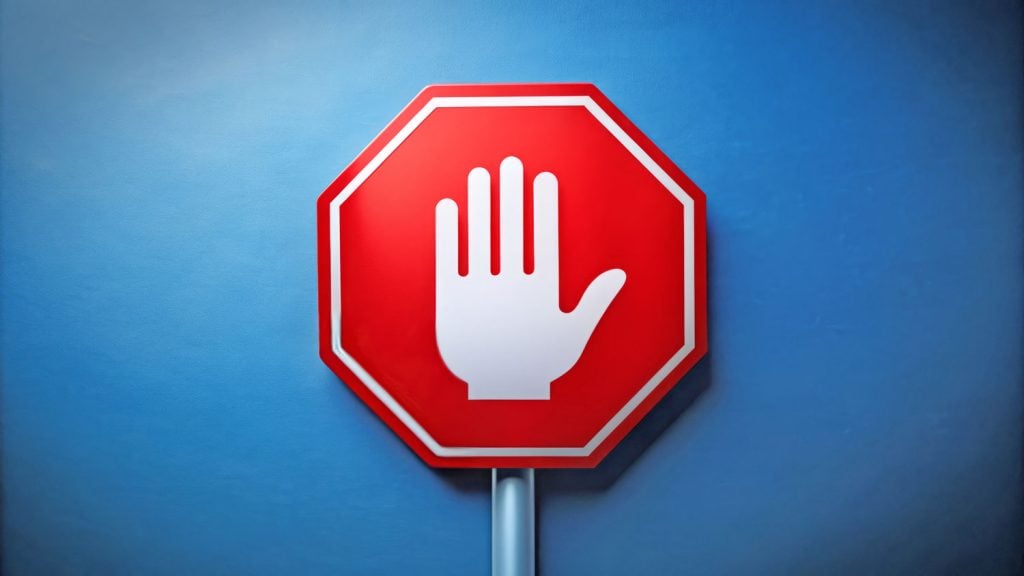Grounds for a cease and desist letter often involve situations like intellectual property infringement, where your patented, trademarked, or copyrighted work is being used without authorization. In these cases, a cease and desist letter serves as a formal demand to stop this unauthorized use. This legal document is crucial for protecting your intellectual property rights and preventing further unauthorized exploitation, and it can also strengthen your legal claim if the infringement continues.
Similarly, if you’re entangled in a broken contract where the other party fails to meet their obligations, such a letter can act as an ultimatum to rectify the breach. It clearly outlines the contractual violations and demands immediate compliance to avoid further legal action.
In cases of defamation, where false statements are harming your reputation, a cease and desist letter can demand the cessation of these harmful assertions. By addressing the defamation, you protect your personal or business reputation from further damage. It acts as a formal warning to the offending party, urging them to cease their harmful behavior immediately. Failure to comply may lead to pursuing legal action, including seeking a restraining order, and can strengthen your legal claim if the defamation continues.
Definition and Purpose
A cease and desist letter is a formal written notification that demands an individual or organization to stop engaging in a specific activity that is deemed to be harmful or infringing on the rights of another party. The primary purpose of a cease and desist letter is to provide a formal warning to the recipient, stating that they must cease their actions immediately or face further legal action. This document serves as a crucial step in protecting one’s rights and can often resolve disputes without the need for more severe legal measures.
Key Takeaways
- Cease and desist letters are essential legal tools used to address issues such as intellectual property infringement, breach of contract, defamation, harassment, and unfair competition.
- Key components of an effective cease and desist letter include clear identification of the parties involved, specific violation details, demands for compliance, and deadlines for response.
- Ignoring a cease and desist letter can lead to severe legal consequences, including lawsuits, financial penalties, and reputational damage, emphasizing the importance of a timely and appropriate response.
- While cease and desist letters do not have inherent legal power, they serve as important notices and preemptive measures in legal disputes.
Common Grounds for a Cease and Desist Letter
Cease and desist letters serve as a frequent instrument in numerous legal disagreements, such as those related to the infringement of intellectual property rights, contract breaches, slanderous activities, harassment cases, and instances of unfair competition. The success of these letters largely depends on the validity of the allegations presented and specifics pertaining to each individual case. Enlisting legal power quickly is crucial when addressing issues like intellectual property infringements.
While it’s possible for any individual to issue a cease and desist letter, they are often dispatched by lawyers or authorized representatives in order to enhance their authority. Below are some typical reasons prompting the issuance of such letters.
Intellectual Property Infringement
Intellectual property infringement occurs when copyrighted, trademarked, or patented material is used without authorization. This can include unlawfully reproducing and distributing copyrighted works or using a logo or tagline that is confusingly similar to an existing trademark. Failing to issue a cease and desist letter in response to infringement may weaken or even forfeit exclusive rights due to laches. Taking prompt action is essential to avoid the risk of losing enforceability over these rights.
When addressing intellectual property infringement, a cease and desist letter should clearly identify the applicable laws that have been violated and demand an immediate halt to all infringing activities. Before sending such a letter, it is important to assess whether the alleged conduct legally constitutes infringement to ensure a strong and enforceable claim.
A well-drafted cease and desist letter should detail specific instances of unauthorized use and outline potential legal consequences. This approach not only serves as a deterrent against continued infringement but also reinforces the protection of intellectual property rights.
Breach of Contract
A breach of contract occurs when one party fails to fulfill its obligations under an agreement. In such cases, a cease and desist letter serves as a formal demand for the breaching party to immediately stop any actions that violate the contract. This letter acts as an ultimatum, requiring compliance with the agreed-upon terms to avoid further legal consequences.
To be effective, a cease and desist letter should clearly specify the provisions of the contract that have been violated, ensuring there is no ambiguity regarding the basis for the demand. If the breaching party fails to comply, the sender may pursue legal action to enforce the agreement. Additionally, noncompliance with the letter can strengthen the sender’s legal position in subsequent proceedings.
While a cease and desist letter itself is not legally binding, it serves as a critical tool in contract enforcement, providing the breaching party with an opportunity to remedy the violation before litigation becomes necessary. It is an essential instrument in business law for resolving contract disputes efficiently and formally.
Defamation and Libel
A cease and desist letter in the context of defamation is utilized to address false statements that damage the reputation of a person or entity. This letter should clearly identify the disparaging remark, articulate why it’s incorrect, outline the resulting harm, and set a timeframe for its withdrawal. Addressing defamation through a cease and desist letter can strengthen a legal claim if the harmful assertions continue.
Employing such letters serves as a mechanism to uphold moral standards in communication by ensuring individuals are held responsible for disseminating falsehoods.
Unfair Competition
Unfair competition and deceptive trade practices, such as disseminating false information about competitors or engaging in misleading advertising, can have serious legal consequences. Businesses may issue a cease and desist letter when they identify deceptive promotional activities, unauthorized use of proprietary information, or breaches of confidentiality agreements.
A cease and desist letter serves as a formal demand to stop such unlawful conduct before legal action becomes necessary. Taking swift legal action is essential to curbing deceptive trade practices and safeguarding business interests. If the offending party fails to comply, the letter can strengthen the sender’s position in potential litigation.
Key Components of a Cease and Desist Letter
Essential elements include:
- Pinpointing the problem while assembling proof
- Weighing up possible repercussions and establishing the legal foundation of the allegations
- Specific violation details and tailoring to suit particular details of the situation, which is vital in thoroughly addressing all pertinent legal aspects
Establishing a strong legal claim in the letter can enhance its effectiveness and potential for compliance.
Employing language that is straightforward, succinct, and legally robust enhances both the impact and authenticity of a cease and desist letter. Below you’ll find an elaboration on these crucial components.
Clear Identification
Precisely identifying the individuals or entities responsible for the misconduct eliminates ambiguity and establishes accountability. The cease and desist letter should clearly specify the inappropriate conduct in question by detailing the exact violations.
Including the relevant legal basis for the claims strengthens the letter’s credibility and reduces the likelihood of it being dismissed as an unfounded threat. A well-supported legal argument reinforces the seriousness of the demand and increases the chances of compliance.
Specific Violation Details
Clearly outlining the nature of the alleged misconduct is essential to ensuring the recipient understands what actions must be corrected. For example, in cases of trademark infringement, unauthorized use of a protected mark can mislead consumers and create brand confusion. Identifying the infringement and explaining its legal implications help establish the severity of the issue. Providing a detailed account of the violation, along with its potential legal consequences, strengthens the claim and enhances the letter’s impact.
Demands and Deadlines
To create a sense of urgency and prompt immediate action, a cease and desist letter should include a clear deadline for compliance. Establishing a firm timeline minimizes uncertainty and reinforces the expectation that corrective action must be taken promptly. A well-structured letter that sets specific demands and deadlines increases its legal effectiveness and reduces the risk of further disputes.
Who Can Send a Cease and Desist Letter?
Anyone can send a cease and desist letter, but it is highly recommended that individuals or businesses consult with an experienced attorney before doing so. A cease and desist letter can be sent by an individual, a business, or an organization, and it is often used as a precursor to further legal action. Consulting with an experienced attorney ensures that the letter is legally sound and increases the likelihood of compliance from the recipient. This professional guidance can also help in crafting a letter that clearly outlines the legal basis for the demands being made.
The Role of an Experienced Attorney
Consulting an experienced attorney can help ensure a cease and desist letter is effective and legally sound. A lawyer can assess the strength of your claim, identify potential risks, and anticipate how the recipient might respond. They can also suggest alternative ways to resolve the issue, such as negotiation or mediation, before pursuing legal action.
Legal Expertise
An attorney ensures that a cease and desist letter is properly worded and compliant with relevant laws, increasing its likelihood of enforcement. A professionally drafted letter carries more weight and is more likely to be taken seriously by the recipient.
Strategic Advice
Beyond sending a cease and desist letter, legal counsel can recommend other ways to resolve disputes, including negotiation or mediation. If the recipient ignores the letter, an attorney can advise on the next steps, including potential legal action.
Assessing Validity
Before sending a cease and desist letter, it’s important to confirm that the other party’s actions genuinely constitute a legal violation. An attorney can evaluate the claim, ensure it meets legal standards, and help prevent weak or unfounded allegations that could undermine your position.
How to Send a Cease and Desist Letter
Ideally, a cease and desist letter keeps the matter out of court and avoids costly litigation. The best result is the recipient stopping the harmful activity. The timeline for resolving issues in a cease and desist letter can differ significantly. Factors such as case complexity, negotiation willingness, and legal processes all play a role. Using certified mail ensures the legal power of the letter by providing proof of delivery.
If the recipient ignores the letter, it can be assumed they are aware of the intent to pursue further action. Here are the best methods for sending such letters.
Certified Mail
It is advisable to send a cease and desist letter using certified mail, ensuring it includes the return receipt requested. This method is essential for obtaining proof of the recipient’s reception of the notice.
Employing certified mail garners a physical confirmation of delivery which can be instrumental in upholding any subsequent legal actions that pertain to providing notice. Obtaining proof of delivery enhances the legal power of the letter.
Alternative Delivery Methods
Utilizing methods like hand delivery or email can elevate the perceived importance of the letter. Employing a process server to deliver it by hand may increase its seriousness.
It is essential to document the method used for delivering the letter, such as using certified mail or requesting a return receipt. This serves as proof that it was indeed transmitted. Documenting the delivery method also enhances the legal power of the letter.
Receiving a Cease and Desist Letter
Receiving a cease and desist letter can be a serious matter, and it is essential to take immediate action to address the allegations made in the letter. Consulting with an experienced attorney is important to understand your legal options and to formulate an appropriate response. Ignoring such a letter can lead to further legal complications and potential lawsuits.
What to Do If You Receive a Cease and Desist Letter
If you receive a cease and desist letter, it is crucial to:
- Take the letter seriously and do not ignore it.
- Consult with an experienced attorney who can provide legal counsel and guidance on how to respond to the letter.
- Review the letter carefully and understand the allegations made against you.
- Gather evidence to support your position and refute the allegations made in the letter.
- Respond to the letter in a timely and professional manner, addressing each point raised in the letter.
By following these steps, you can effectively manage the situation and potentially avoid further legal action.
Responding to a Cease and Desist Letter
How you respond to a cease and desist letter can significantly impact any future negotiations or legal proceedings. Ignoring the letter does not make the issue disappear—it may escalate the situation and increase legal risks. Addressing the allegations properly can help protect your legal position and potentially resolve the matter without further conflict.
To handle a cease and desist letter effectively, it is advisable to consult an experienced attorney who can provide guidance. Below are key steps for responding appropriately.
Consult an Attorney
Upon receiving a cease and desist letter, seeking legal counsel immediately is essential. An attorney can assess the legal implications of the letter and help you avoid making statements that could be interpreted as an admission of fault. A well-crafted response should provide evidence that refutes the claims or establishes a strong legal defense, all while maintaining a professional and formal tone.
Avoid retaliatory actions, such as making public statements or airing grievances on social media, as these could negatively impact your position. However, acknowledging receipt of the letter can demonstrate a willingness to address the matter in good faith.
Investigate Claims
It is important to carefully examine the allegations in the letter to determine their validity. An experienced attorney can assist in assessing whether the claims are legally sound. Ensuring that your response is based on accurate information helps prevent unnecessary legal complications. Failing to conduct a thorough review could lead to unintended legal consequences, including costly litigation.
A careful analysis of the claims strengthens your ability to make informed decisions about how to proceed.
Craft a Thoughtful Response
A well-reasoned response directly addressing the claims in the letter can help de-escalate the situation and potentially prevent further legal action. A carefully crafted reply, developed with the guidance of an attorney, can resolve existing issues and reduce the risk of future disputes.
Taking the time to prepare a strategic response may also demonstrate that you take the matter seriously, increasing the likelihood of a favorable resolution without the need for litigation.
Legal Considerations
A cease and desist letter itself is not legally enforceable, but it serves as a formal warning that the sender may pursue further legal action if the recipient does not comply. While the letter does not carry immediate legal consequences, it signals the sender’s intent to escalate the matter if necessary.
Legal Force and Enforceability
Ignoring a cease and desist letter does not automatically result in legal penalties, but it may prompt the sender to take stronger action, such as filing a lawsuit or seeking a court order. The possibility of legal escalation highlights the importance of taking the letter seriously and responding appropriately.
Legal Consequences of Ignoring a Cease and Desist Letter
Disregarding a cease and desist letter could culminate in severe legal consequences, such as being taken to court or facing financial penalties. Actions that may be initiated when you ignore a cease and desist entail initiating legal proceedings, applying for an injunction, or claiming compensation—resulting potentially in substantial financial repercussions. One might incur significant attorney costs and suffer harm to their reputation. Ignoring the letter can also strengthen the sender’s legal claim and lead to further legal action.
Overlooking a cease letter can precipitate grave legal outcomes including:
- Commencement of lawsuits
- Monetary sanctions
- Financial penalties
- Court filings against you
- Requests for injunctive orders
- Compensation claims
These actions may lead to heavy financial burdens as fallout. Immediate judicial effects along with attorney expenses and reputational deterioration are possible ramifications.
Responding adequately to the dispatch can aid in averting ensuing legal entanglements while lessening potential hazards.
Potential Lawsuits
Should the recipient overlook a cease letter, it is advisable for the issuer to seek legal counsel to determine subsequent actions. A wrongful accusation within a cease and desist correspondence could provoke undesirable responses such as receiving a counter cease and desist.
Disregarding such a notice may lead to costly court proceedings, financial penalties, and significant judicial consequences. Neglecting to properly respond to the letter can intensify the situation into full-blown litigation, thereby imposing additional monetary costs and legal conflicts.
Financial Penalties
Failing to adhere to a cease and desist letter can lead to significant monetary consequences or official sanctions. These could stem from prescribed statutory penalties, actions taken by debt collection agencies, or damages mandated by the courts. The potential financial repercussions of disregarding a cease letter underscore the critical nature of treating these notices with due diligence and responding accordingly. Responding to the letter promptly can mitigate the legal power of potential financial penalties.
Summary
This guide has explored the purpose, key components, and strategic use of cease and desist letters. These letters serve as effective tools for addressing issues such as intellectual property infringement, contract breaches, defamation, harassment, and unfair competition. Understanding their function and proper use is essential for protecting legal rights and resolving disputes efficiently.
Failing to respond to a cease and desist letter can lead to serious legal consequences, including lawsuits and financial penalties. It is important to take these letters seriously by consulting an experienced attorney, carefully reviewing any claims, and preparing a well-considered response. Taking prompt and informed action can help mitigate risks, prevent unnecessary legal complications, and protect your interests. Seeking legal guidance early can make a significant difference in effectively managing disputes and avoiding costly litigation.
Received or Need to Issue a Cease and Desist Letter? Schedule a Free Call
If you have received a cease and desist letter or need to send one, it’s important to respond strategically. Our experienced legal team can help you navigate the process and explore your legal options.
Whether you’re dealing with intellectual property infringement or contract disputes, consulting with an experienced attorney can provide the expert advice you need. Schedule a free call with our team today to discuss your situation and explore the best course of action. Contact us to get started and ensure your rights are protected.
Frequently Asked Questions
What are the grounds for a cease and desist harassment?
Harassment cease and desist letters are utilized to halt behaviors that are considered threatening or unwanted, such as slander, libel, defamation, and various types of harassment leading to emotional distress. It is important to include specific violation details to describe the grounds for sending a cease and desist letter for harassment.
To ensure these letters can be legally enforced effectively, it is vital to precisely detail the specific conduct necessitating the issuance of such a letter.
What makes a cease and desist valid?
To be considered legitimate, a cease and desist letter should explicitly pinpoint the problem at hand, provide specific violation details, back it up with corroborative proof, spell out the possible repercussions of non-compliance, and incorporate a solid legal foundation for the stipulated demands.
Incorporating these critical elements is crucial in order to enhance the gravity with which the letter is received and to improve its prospects of accomplishing its desired result.
What proof do you need for cease and desist?
When drafting a cease letter, it’s essential to present proof backing your allegations. This may encompass items like images, specific violation details, or earlier correspondences that are pertinent to the matter at hand. The issue must be clearly outlined in the document along with any possible repercussions.
The cease and desist letter should also stipulate an appropriate timeframe within which the recipient is expected to halt the identified activity.
What is a cease and desist letter?
A cease and desist letter is a formal written notification and legal document that requires an individual or organization to stop certain activities that infringe upon rights or breach contracts, acting as a warning prior to potential legal action.
When should I send a cease and desist letter?
In instances of intellectual property infringement, contract breaches, harassment, or specific violation details, it’s recommended to send a cease and desist letter. This document acts as the preliminary measure for settling disputes and averting additional damages.
To safeguard your rights with maximum efficacy, taking swift measures is strongly suggested.



